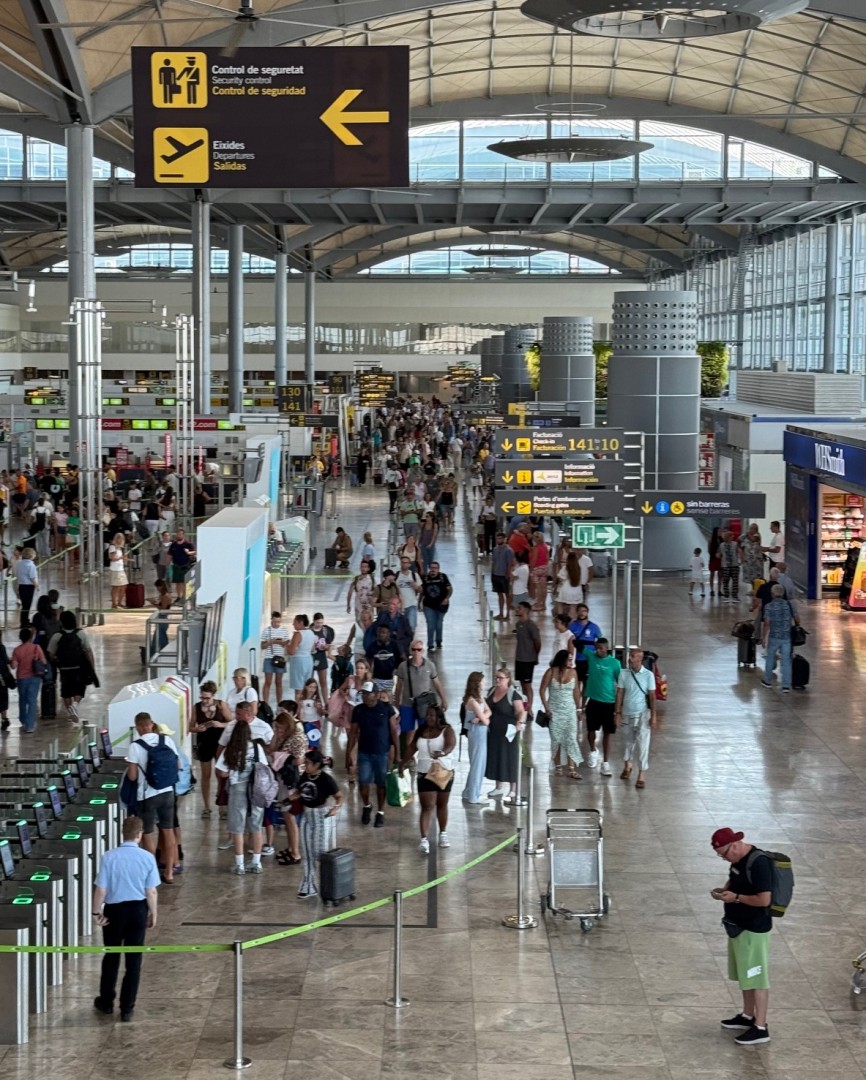
The next time you drop off your suitcase at the check-in counter or walk through the airport corridors, take a moment. You feel an implicit sense of calm, a trust that everything is under control to ensure your journey is safe. We tend to attribute this security to the visible technology: state-of-the-art scanners, detector arches, and surveillance cameras. But what if we told you that the most crucial component of your safety is invisible and entirely human?
To understand this “human shield” that protects our skies, we spoke with Carlos Ortiz, an AVSEC instructor in Spain and a key figure in training on the official AVSEC platform.
Carlos, we always think of technology as the first line of defense. For you, where does true security lie in such a complex environment?
“Technology is a fantastic tool, an essential one, but it’s still just that—a tool,” Ortiz states. “The real security system is the network of thousands of people working at the airport.
Intuition, critical judgment in an unexpected situation, or the ability to notice something that ‘doesn’t add up’ are qualities that no machine can replicate. Aviation security, or AVSEC, is not about preventing technical failures—that’s a different kind of safety—but about protecting us against acts of unlawful interference. And for that, you need human intelligence and observation.”
Who makes up this “human shield”? Are we only talking about uniformed security personnel?
“That’s the great myth we need to debunk,” Ortiz clarifies. “You’d be surprised. The first line of defense is much broader than people think. It’s the person who serves you coffee at the boarding gate, the operator loading bags into the cargo hold, the cleaning staff who access the facilities at night, or the maintenance technician. All of them, without exception, must pass mandatory initial training to work in the restricted security areas of an airport. This network of people forms a security chain in which everyone is essential.”
You mention an AVSEC course. Is it a highly technical course for someone who, for example, will only be working in a shop?
“More than technical, it’s a course designed to change mindsets,” the instructor explains. “The goal is for every employee to develop a ‘security mentality.’ Through this course, individuals learn to understand why every rule exists, no matter how strict it may seem, so they comply with it rigorously. The training helps people stop seeing a procedure as an obstacle and start understanding it as an essential part of their job. It teaches them to be vigilant, not to hesitate in reporting an irregularity, and to comprehend that even a small gesture can be an immense act of protection.”
But why is it so important for this training to come from an authorized and established source?
“Because aviation security leaves no room for gray areas. It is one of the most regulated sectors in the world, and for a very serious reason,” Ortiz explains. “The key is standardization. A reference platform like AVSEC.info doesn’t just hand out a certificate; its function is to ensure that every person, regardless of the company they work for, receives the exact same high-quality, updated, rigorous, and AESA-authorized training. This creates what we call a ‘security culture,’ ensuring there are no weak links in this chain of protection.”
This standardized approach has a direct impact on the overall security of airports. AVSEC training not only covers the basics of security but also focuses on the importance of constant observation and swift action in the face of any potential threat. Every individual within the security network, whether a cleaning worker or a shop employee, is trained to detect potential problems, ensuring that security does not depend solely on technology.
Carlos emphasizes that while technology plays an essential role in airport security, human intervention remains crucial for dealing with unforeseen situations. For instance, detecting suspicious behavior or identifying out-of-place objects cannot always be done accurately by machines. This is where the “security mentality” cultivated through AVSEC training comes into play.
In summary, security at Spanish airports depends not only on visible technology but on a team of professionals who, with the right training, become the true pillar of aviation protection. Every person involved in the process, from security personnel to employees in other sectors, plays a crucial role in creating a safe environment for passengers.
The next time you are in an airport, don’t just look at the cameras and scanners. Look at the people around you, because in each of them is a silent guardian who, with their training, helps make your journey safe. The confidence we feel when we travel is supported not just by technology, but by the human effort behind every procedure.
Media Contact
Company Name: AVSEC
Contact Person: Andrés García
Email: Send Email
Country: Spain
Website: https://avsec.info/
